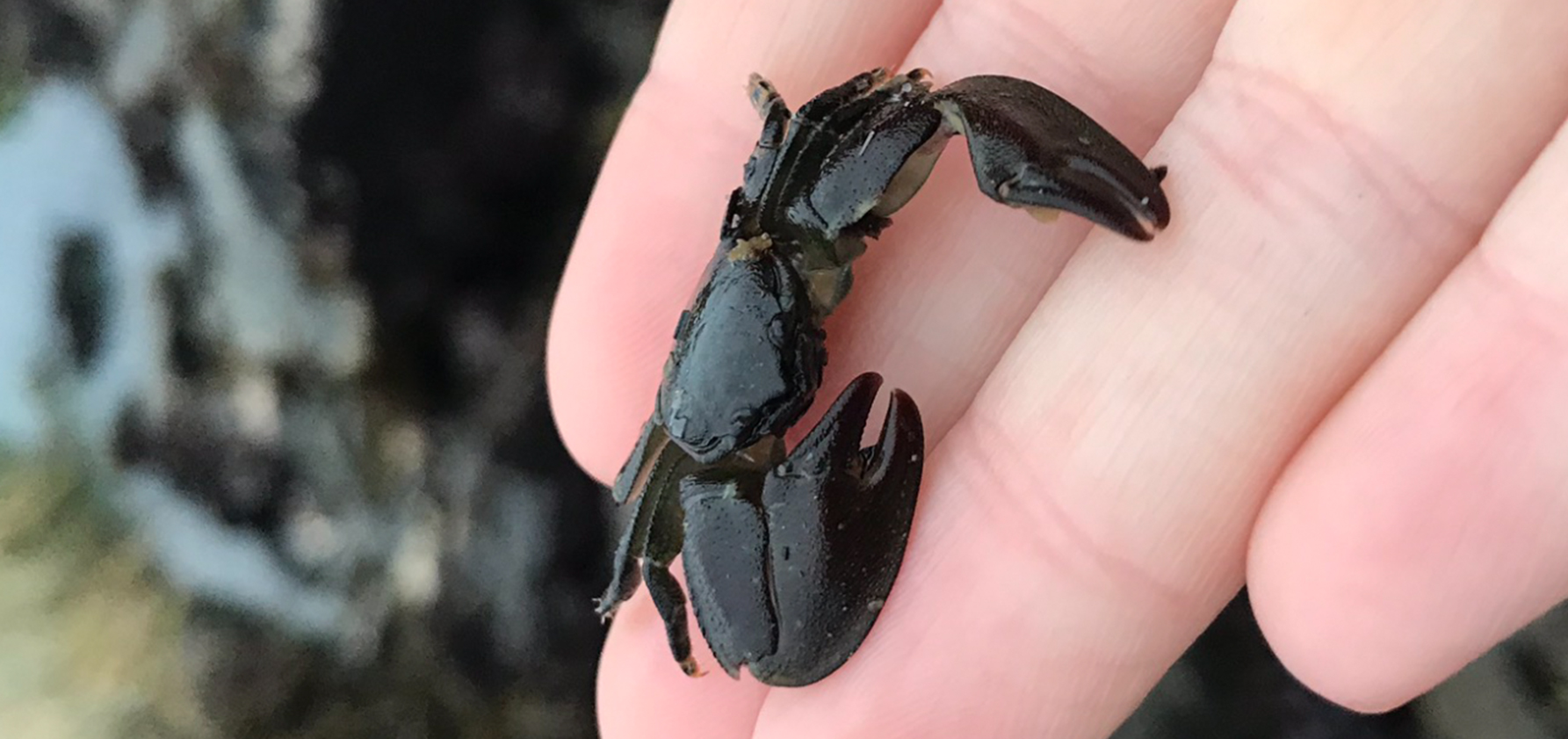
Waking up this morning was easier than the previous mornings because we only had to be up at 7. After breakfast, we went over to Middle Cove, which, believe it or not, earned its title for being in the middle of North and South Cove. When we arrived, we had to climb down a nearly-vertical hill that was steeper than the drop of a GPA after finals. Once we got down to the intertidal zone, we were given free-range to collect the data that we needed for our projects.
For some background, I had been struggling with an idea for the experiment because I overthink everything and I couldn’t stick with any specific idea. My group member and I probably cycled through 20 different ideas; ranging anywhere from mussel density throughout different areas of the marina to byssal thread strength in tide pools and mussel beds. While we were collecting random data for one of our ideas that we would immediately change, a couple hiking approached us and asked about something they kept seeing on the beach. I knew what it was immediately from their description; it was a type of jellyfish called a “by-the-wind sailor.” It was honestly one of the coolest experiences to know exactly what they were referring to and be able to identify it with confidence.
Eventually, we collected as much data on our mussels as possible and met back up with the group. We were beginning to really stress about the project because we had to fit an entire lab experiment with a matching lab report (anyone who has ever written a lab report, even within a multiple month timespan, will know how stressful this sounds) into the second half of a two-week trip. Having a single week to research your topic, perform the experiment, and write up a formal lab report can feel almost impossible at times. I can’t complain though, because I love a good challenge. Once we got back to the group, our professor had us flip over different sizes of rocks to record the types of species we saw for a theory called the intermediate disturbance hypothesis. When we flipped them over, we would see piles of porcelain crabs underneath. They are really cute and small crabs with claws larger than their body that we have been finding at every site. I picked one up by the claw, and it fell off. I know I didn’t rip it so I wanted to see if another crab would drop its arm as well. I tried picking up a few more and they also dropped their arms. This was something we became very curious about and then we knew it was what our experiment should be about. We ditched all of the semi-completed experiments we had and collected a bunch of the crabs to take back to the lab. I am really happy with our project now because I think it is really interesting and very little is known about it. When we were in the lab, we were even struggling with identifying males vs females (which is usually something fairly easy to do with crabs). I liked that because there is still so much more to research and discover. We are going to look at the autonomy (the escape response of an animal that involves losing a limb) and see if there is a correlation to size and the hesitance to drop the arm immediately. A claw, unlike another example of autonomy like a lizard’s tail, is also a form a defense. We believe that the crabs will face this “fight or flight” decision. Since the larger crabs have larger claws and are usually more aggressive, we think that they will attempt to attack with their claw and avoid dropping their arm more often.
This is why I love science because right when you feel completely discouraged and can’t seem to figure out a topic, one will show up in the most unexpected way. Stumbling upon ideas by finding something in the field and asking a question, can create some of the best research. I’m so happy that I took this class with Dr. Lord because I feel like I’ve already learned more species in just one week than I have in my life. I highly encourage east-coast students to go on a trip like this because there is so much over here that you couldn’t imagine in your wildest dreams. The diversity here is unlike anywhere else and the animals can’t be even remotely compared to anything on the east-coast. The rocky shores of the Pacific make the eastern coast look like a swimming pool. You will not find more beautiful cliffs, trails, creatures, or views than in Oregon. It is crazy to think that we are already halfway finished with the trip. On one hand, it feels like we have been here for months because of how much we are fitting into each day, and on the other hand, it feels like it’s only been a single day. No matter how long it feels, this is a trip of a lifetime that I will cherish always. I have met some really amazing people and had some of the most fun I’ve had in a long time. If you are curious and adventurous, go on this trip.